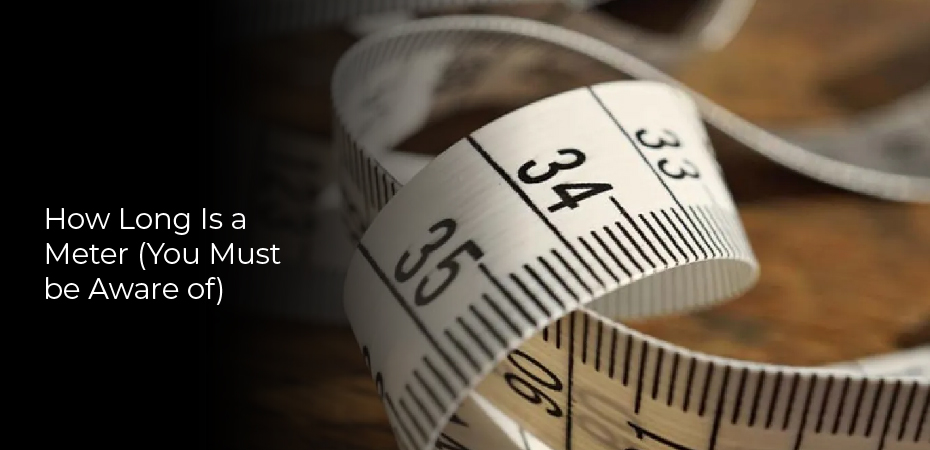
How Long Is a Meter (You Must be Aware of)
Table of Contents
If you’ve ever wondered how long a meter is, then you’ve come to the right place. Meter is the SI unit of length and can be expressed in different units like feet, inches, and yards that can be converted to meters. These values are different in nature, but their unit of length is the same.
In this article, you’ll learn the meter’s history and the measurement of length. Also, you’ll learn about the speed of light in a vacuum and how to convert meters to feet.
The Background History of the Meter
The meter’s history goes back centuries. The term “meter” was first used to refer to one ten-millionth of the distance between the equator and the north pole on a line passing through Paris. Throughout history, this term has been used to measure the length in different countries. Eventually, this term became the measurement standard and was adopted by countries worldwide.
It took another two centuries for TheMeter to reach the status of an official unit. In 1792, France’s Bureau des Longitudes commissioned an expedition between Barcelona and Dunkerque to measure the length of a meridian between the two cities. The result of this expedition was that the meter came into existence and was subsequently adopted as an official unit of length.
In the eighteenth century, the meter was widely used as the standard unit for length. However, there were two competing definitions for the meter, one referring to a half-period of one second and the other referring to the length of Earth’s meridian (the line from the equator to the north pole). The French Academy of Sciences chose the meridional definition. Moreover, the meter has different lengths at different locations on Earth, as the force of gravity varies over different regions.
How Do You Know About Speed of Light in a Vacuum
The speed of light in a vacuum is c. This value remains constant no matter where light passes, whether an astronaut in a spacecraft measures it or a hypothetical observer on Earth. It is considered to be the ultimate limit of spacetime. There are various theories about what causes light to move at c.
Earlier, scientists in Scotland had slowed a single photon in a vacuum. Although the slowing was just a few millionths of a meter, it nevertheless confirmed that light could travel slower than the official speed of light. As such, we should not limit the speed of light to the current value.
The speed of light in a vacuum is c, and it is the highest speed for energy and information. Light traveling through matter will be slowed down by its refractive index and bend when it comes in contact with particles.
What About the Conversions Between Meters and Feet
Meters and feet are not the same length units. Both are Imperial Units but are not derived from the same system. As a result, they are abbreviated differently. Meters are written m, while feet are abbreviated ft. Scientists use meters as the base unit of measurement and convert them to other length units later.
This program has several useful functions to convert quantities between different systems. It also handles multiplicative scale changes and nonlinear conversions. For example, it can convert from feet to inches or meters. It can be used interactively or from the command line. To use the program, you must specify the units to be converted.
- CONVERSION OF METER TO CENTIMETER
A centimeter is a unit of distance abbreviated as cm. it can also be expressed in centimeters as 1m = 100 cm.
- CONVERSION OF METER TO MILLIMETER
The millimeter is the abbreviation of mm, and 1 mm is equal to 10 millimeters. It can be expressed as 1m = 1000 mm. A meter can also relate to other units like measuring length, which includes inches, feet, and yards.
Table 1: Conversion of meter
| Meter | Conversion of Meter |
| 1m | 1m = 100 cm |
| 1m | 1m = 1000 mm |
- METER TO INCHES
Inches is the USCS unit which is mainly used to indicate the length and abbreviated as in. it can also be expressed between meters and inches as 1m = 39.37 inches.
- METER TO YARDS
Yards is another unit of USCS and abbreviated a yd. The relation between meters and yards is 1 m = 1.094 yd.
Table 2: Conversion of meter to USCS units
| Meter | Conversion of Meter |
| 1m | 1m =39.37 in |
| 1m | 1m = 3.28 ft |
| 1m | 1m = 1.094 yd |
Final Wordson Meter
A Meter is an instrument that measures distance or volume. In filmmaking, a meter measures distances and speeds concerning each other. However, we use meters in filmmaking to measure time, the size of rooms, objects, distances, and more.
When it comes to meters, we should start with a general guideline. Most meters are accurate to within plus or minus 0.5%. But the accuracy depends on the device and the fuel you’re trying to measure.